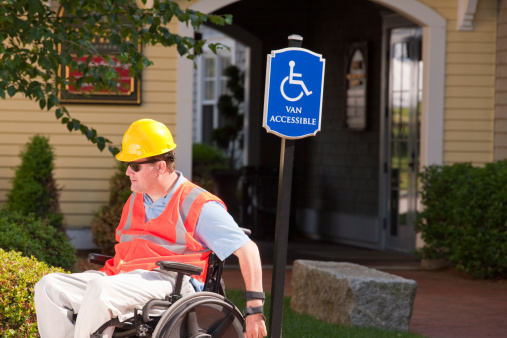 Approximately 11,000 people suffer a spinal cord injury each year. Some of these injuries result in quadriplegia — or paralysis of the arms, legs and part of the trunk. Others will result in paraplegia — paralysis to the legs only.
Approximately 11,000 people suffer a spinal cord injury each year. Some of these injuries result in quadriplegia — or paralysis of the arms, legs and part of the trunk. Others will result in paraplegia — paralysis to the legs only.
People with quadriplegia and paraplegia face extraordinary hurdles. They must learn to cope with physical challenges and emotional trauma. Some require daily assistance and regular trips to the hospital for corrective procedures. Many will have chronic pain the rest of their lives.
The cost of lifetime care for a quadriplegia or paraplegia patient can range from $500,000 to $3 million or more, depending on the severity of injury.
Speak With A Knowledgeable Professional
Our team of New York and New Jersey spinal cord injury lawyers recover money compensation for people with quadriplegia and paraplegia caused by:
- Car accidents
- Sports injuries
- Workplace falls from scaffolds and ladders
- Construction accidents
- Motorcycle wrecks
- Dangerous tools or machinery
- Defective products or equipment.
The Ginarte law firm offers a free case evaluation to anyone who has suffered a spinal cord injury. Our dedicated quadriplegia and paraplegia attorneys will review the facts of your case and outline your legal rights and options. Call 1-888-GINARTE (1-888-446-2783) or use this online contact form to request your case review today.
Spinal Cord Injuries and Paralysis
The spinal column is made up of 31 bones called vertebrae — 7 cervical vertebrae (neck), 12 thoracic vertebrae (upper and middle back), 5 lumbar vertebrae (lower back), 5 sacral vertebrae (sacrum) and 2 fused coccygeal vertebrae (coccyx). The vertebrae are stacked on top of each other to form the spinal column.
The spinal cord — which is located within the spinal column — is the central bundle of nerves that extends from the brain. It transmits signals between the brain and the rest of the body. Damage to the spinal cord can result in permanent paralysis, temporary paralysis and other neurologic and sensory impairments.
There are at least 200,000 people living with spinal cord injuries in the United States. Around half of those cases involve quadriplegia. This is the most serious type of spinal cord trauma because it can impair the muscles controlling vital functions like breathing and blood pressure. Quadriplegia can be life-threatening.
About 100,000 people in the U.S. suffer from paraplegia, which is paralysis at the thoracic, lumbar or sacral regions of the mid and lower back. Paraplegia results in loss of feeling and function to the legs.
Symptoms of quadriplegia and paraplegia can depend on the exact site and severity of the spinal cord injury. Generally, the higher the injury site is on the spinal cord, the more extensive the paralysis.
Paralysis can be temporary or permanent, partial or complete. Patients with quadriplegia or paraplegia can experience loss of ability to move the feet, legs, shoulders, arms, wrists or hands; loss of bowel and bladder control; reduced blood pressure; and difficulty breathing without assistance
Causes of Quadriplegia and Paraplegia
Most cases of paralysis result from trauma such as a sudden blow or impact to the spine. This causes a fracture or dislocation of vertebrae and thereby injures the spinal cord.
The majority of traumatic spinal cord injuries occur in motor vehicle accidents.
The following are the leading causes of quadriplegia and paraplegia:
- Accidents involving motor vehicles (cars, trucks, motorcycles) – 39 percent
- Falls – 28 percent
- Acts of violence (often gunshots) – 13 percent
- Sports injuries – 8 percent
- Disease, infections and other causes – 12 percent.
Young people are particularly susceptible to spinal cord injuries. Fifty-six percent of all cases of quadriplegia and paraplegia occur between the ages of 16 and 30.
The course of long-term treatment is different for every patient. Wheelchairs and assistive devices might be required for mobility. Respiratory aids might be needed for breathing. Physical and occupational therapy can help preserve and improve muscle function. Catheters and bowel programs can enhance quality of life. Medications can control pain and reduce swelling.
Some quadriplegia and paraplegia patients need assistance performing everyday tasks like eating, grooming and dressing themselves. Daily help might also be required to prevent complications such as bedsores, urinary tract infections and pneumonia. Mental health treatment might be needed for depression and loss of self-esteem.
The cost for all of these things can be astronomical:
- Average initial hospitalization costs following a spinal cord injury – $140,000
- Average first-year expenses (all types of paralysis) – $198,000
- Average first-year expenses (quadriplegics) – $417,000
- Average first-year expenses (paraplegics) – $152,000
- Length of average initial hospitalization in acute care – 15 days
- Average stay in rehabilitation unit – 44 days
- Average annual medical cost – $15,000–$30,000 per year
- Average lifetime costs for paraplegics (age of injury 25) – $428,000
- Average lifetime costs for quadriplegics (age of injury 25) – $1.35 million
- Percentage of spinal cord injury victims covered by private health insurance at time of injury – 52 percent
- Percentage who are unemployed eight years after injury – 63 percent.
Fighting for the Rights of People Who Are Paralyzed
Do you or a loved one have quadriplegia or paraplegia caused by an accident? If so, you are entitled to a free and confidential legal consultation with a New Jersey / New York spinal cord injury attorney. Our dedicated team has more than 150 years of combined experience fighting for injured individuals and families in New York and New Jersey.
Speak With A Knowledgeable Professional
